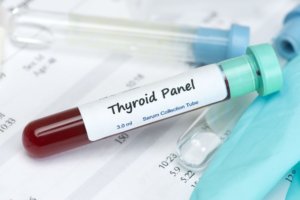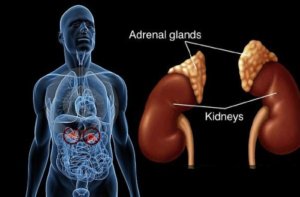The Endocrine System, like the nervous system, is one of the major control systems and is closely integrated with almost every other major function system of the body. This is mainly because of precisely defined chemical messengers called hormones. The understanding of the endocrine system and its functional relevance is characterized by an ‘S’ shaped growth curve, representing a lag phase, the phase of exponential growth and the current plateau phase! The commonest endocrine diseases in our region are the thyroid diseases, diabetes mellitus, the parathyroids and the adrenals. Know more about the thyroid function here.
Death due to endocrine diseases is relatively rare, although, they are an important cause of morbidity…says Dr. E. Prabhu, Consultant Nuclear Medicine Physician.
The possibility of thyroid dysfunction is strongly considered when the signs and symptoms indicate that the gland has increased functioning (Hyperthyroidism) or it is unable to meet the metabolic demand of the body (Hypothyroidism).
What is hyperthyroidism & hypothyroidism:
Hyperthyroidism is considered if there is fatigue, anxiety, tremulousness, insomnia, drowsiness, changes in mood or a tendency to emotional liability. In addition, they have increased appetite, progressive weight loss despite consuming more and frequent food, hair loss, change in skin texture, increased heart rate, palpitations, joint pains, muscle weakness, and menstrual disturbances. There may also be a specific association with certain other medications and also it can be seen in several other members of the same family.
In Hypothyroidism, patients are described as ‘good-tempered!’, ‘heavy’, ‘expressionless’, ‘vacant’, ‘blunted’, ’large featured’, very slow to respond and often responds with a smile only! Their face is relatively expressionless, pale, puffy, have a large tongue and swollen eyelids. Their voice is husky, slow and coarse. There is slurring of words, the thickness of lips, clumsiness and loss of hair in the scalp and in eyebrows.
On several occasions, the diagnosis is not as straight forward as above and we are in need of many laboratory tests to confirm the diagnosis, especially in borderline conditions.
Commonly available thyroid function tests are divided into two – in vivo tests (Evaluation thyroid gland activity, its integrity of hormone synthesis and secretion by directly administering Radioactive substances into the body) and in vitro tests (Measurement of thyroid hormone concentration in the blood sample taken from the patient in a clinical laboratory by various procedures).
In vivo Thyroid Tests:

Thyroidal Radioactive Iodide Uptake test (RAIU)
This is the most common and the only direct method of evaluation of Iodide metabolism in the thyroid. Radioactive Iodine (131I) is given orally to the patient either in a capsule or in liquid form. The quantity of Iodine accumulated in the thyroid is counted periodically to understand the trapping and organification function of the Iodine. Simple thyroid probes are used for this purpose and this test is currently available only in few centres in Chennai. Since there is considerable interference from stable, non-radioactive Iodide (127I) these days, if done meticulously, the information obtained has a reasonably high degree of accuracy and least expensive.
Thyroid Scintiscans:
This test is more widely available and the normal or abnormally functioning thyroid tissue is visualized. Radioactive Technetium pertechnetate (99mTc O4) scan is the most common and gives valuable information about the functional anatomy of the Thyroid.
Ultrasonography:
This is the commonest scan done to study the structure of the thyroid gland. It is most useful in differentiating between the solid and cystic nodule. It is also helpful in the evaluation of the surrounding neck structures, measure the thyroid size, guide in certain other test procedures like the biopsy. This procedure is simple, painless and can be safely done even in pregnancy and in small children.
X – Rays, C.T.Scans and MRI:
Currently, these procedures have a limited role and are indicated only for specific reasons – unless there is strong clinical suspicion. Calcified areas in the thyroid gland and lymph nodes can be evaluated by the X- rays and the C T – scans.
In-vitro Thyroid function tests:
These tests are basic for indirect assessment for thyroid hormone-dependent metabolic activity in our body. They help in the estimation of hormone level, the concentration of other Iodinated compounds and their transport in the blood.
Commonly done tests include –
Measurement of total thyroid hormones ( Total T3 & Total T4 )
Total T4 is 99.97% bound to circulating transport proteins in the blood and is the first hormone to fall in Primary Hypothyroidism. Usually, the Total T3 is within the normal range and is a poor discriminator for hypothyroidism. However, in Hyperthyroidism, T3 is the first hormone to get elevated.
Estimation of Free Thyroid Hormones ( Free T3 and Free T4 )
Minute amounts of thyroid hormones are in circulation and their accuracy of estimation is often less reliable even with the best commonly available contemporary technology. This is mainly because of their smaller molecule size and quantity. However, they are of great help in special conditions like pregnancy, serious liver diseases, prolonged illness, protein-calorie malnutrition only.
Estimation of Thyroid Stimulating Hormone (TSH)
Thyroid Stimulating Hormone is secreted by the Pituitary Gland. This hormone regulates the functioning of the Thyroid and is increased when the thyroid function is depressed. Several methods are currently available to evaluate its level with a reasonable degree of accuracy like the Radio Immuno Assays (RIAs), Immunoradiometric Assays(IRMA), Chemiluminescent Assays (CLIAs). Any method that can find out the TSH levels between 0.01mIU / ml to 100 mIU. is acceptable for all practical purpose.
Thyroid Autoantibodies ( ATA & AMA)
These antibodies are usually detected in about 10 % of the normal population. However, in patients with Autoimmune Thyroiditis (Hashimoto’s thyrotoxicosis)it is increased in high titres.
Thyroid Binding Globulin (TBG)
Serum TBG level is mainly used these days to evaluate the patients who had undergone an operation for cancer of thyroid gland. Otherwise, it is not routinely done for all patients. Although there are many more tests available for evaluating the functions of the thyroid gland, only the above mentioned are of maximum help in common clinical conditions.
Diabetes mellitus:
The complications of diabetes include Coronary Artery Disease, Left Ventricular Hypertrophy, Ventricular Dysfunction, Stroke or Transient Ischaemic Attacks due to defective blood circulation in the brain, Peripheral Vascular Diseases, intermittent claudication, absent pulses, Protein wastage through the kidneys and retinal damage. Presence of hypertension in addition, aggravates all the above possibilities by several times and therefore, everyone has to be meticulously screened periodically. Patients should, in addition, adopt a healthy lifestyle like reduce weight if overweight, stop smoking, increase physical activity, reduce salt intake in the diet and learn to cope up with stress.
The current strategy for early detection of end-organ damage is to be more objective in its evaluation and prognostification. Routine biochemistry and immunological methods, although sensitive, are often delayed. Standard interventional procedures like the coronary angiogram, done in the first place, is often misleading because abnormal coronary angiograms can be obtained even in newborn babies and in healthy individuals.
Nuclear medicine investigations like the myocardial perfusion imaging with the current state of the art technology, are extremely sensitive, non-invasive and are of great help inaccurate evaluation of myocardial dysfunction. Similarly, Renal perfusion scans help in the evaluation of Glomerular filtration, tubular function and autonomic disturbances in the outflow of urine. Three phase bone scans are of great help in the examination of blood flow in the extremities, bringing out occult infections of the bones & joints and evaluation of diabetic foot ulcers.
The Parathyroid Gland

Pic courtesy: endocrineweb.com
The Parathyroids secrete Parathyroid hormone (PTH), which has an important influence on the Kidney function, Vitamin D metabolism and the bone. Primary hyperparathyroidism is the commoner presentation, where patients have all nonspecific complaints. They include loss of appetite, nausea, vomiting, constipation, weight loss, increased urination and thirst, weakness, tiredness, drowsiness, poor concentration, memory loss and depression. Renal stones are also commonly seen.
Laboratory tests may reveal increased serum calcium and parathyroid hormone levels. X-ray of fingers can reveal tufting of the tips of the finger bones. Tc – Thyroid SESTAMIBI. Scans can reveal nodules in the parathyroid gland with a greater degree of specificity. These tests are also non – invasive and are helpful in differentiating other similar situations.
The Adrenal Glands

Pic courtesy: thyroiadnation.com
The adrenal glands secrete important sodium-retaining hormone in the body – the Aldosterone (Mineralocorticoids) and steroid hormone – Cortisol (Glucocorticoids). Excess of Glucocorticoids produces Cushing’s Syndrome – where the patients will have obesity, breathlessness, typical lemon on a toothpicks appearance. Growth problems, Skin pigmentations, wounds and infections, menstrual disturbances and psychiatric problems are common.
The treatment is decided following the confirmation of increased adrenal function, specialized laboratory and x-ray investigations. 75Selenium – labelled cholesterol is of much help in locating adrenal tumours.
Addison’s Disease is another clinical condition relatively common in our population. Diseases like tuberculosis, autoimmune diseases, intense stress, AIDS, viral and fungal infections etc., there is insufficiency of steroid hormones produced by the Adrenal glands. They are usually treated with adequate steroid replacement therapy after confirmation of diagnosis by complex laboratory diagnostic tests.
Certain rare diseases arising from Adrenal Medulla can cause abnormally high hormones broadly called as catecholamines. The patients develop hypertension, stroke, myocardial infarction, and ventricular failure. 24 Hour urine sample is obtained and screened for substances called urinary catecholamines. Whole Body imaging with Iodine labelled Metaiodobenzylguanidine (MIBG) in addition to CT Scans are of great help in diagnosing and treating this condition.
There are many more endocrine disturbances that can occur in our body and systematic evaluation under a suitable expert in this speciality will be of great help in confirming the correct diagnosis and plan appropriate management. Nuclear Endocrinology has now come of age along with Clinical endocrinology, to make the diagnosis of complex situations noninvasively and treat precisely.
